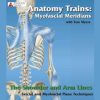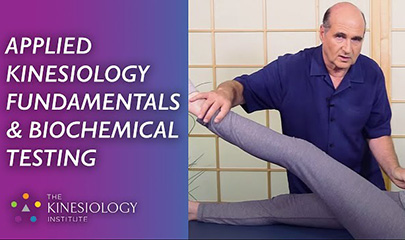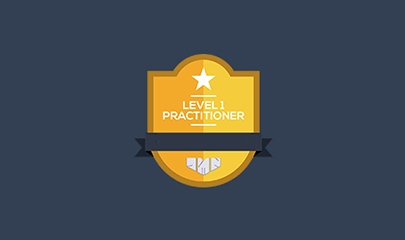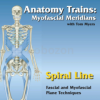Technique Series: Spiral Line By Tom Myers
$39,00 $15,00
Comprehensive Review of Technique Series: Spiral Line by Tom Myers – Digital Download!
Let’s embark on a captivating adventure to uncover remarkable insights that spark your curiosity and elevate your understanding

Technique Series: Spiral Line By Tom Myers
Overview

Comprehensive Review of Technique Series: Spiral Line by Tom Myers
In the realm of bodywork and physical therapy, understanding the intricacies of human anatomy is paramount. Tom Myers, a well-respected figure in the field, introduces profound insights through his work, particularly in his Technique Series: Spiral Line. This series serves as a bridge between theoretical knowledge and practical application, unveiling concepts from his acclaimed book, Anatomy Trains. The eight instructional videos in the series meticulously explore the fascinating connections within fascial structures and myofascial meridians, particularly emphasizing their relevance to the spiral line of human anatomy. By offering a mentorship-style format that encourages interaction, inquiry, and direct feedback, Myers fosters a synergistic learning environment. This unique approach enriches the understanding of movement while addressing various physical challenges that arise from myofascial patterns.
Understanding the Spiral Line
The Fascial Connection
To grasp the significance of the spiral line in Myers’ Technique Series, it’s essential to first understand fascia itself. Fascia, the connective tissue intertwining our muscles, plays a vital role in how our bodies move and function. Think of fascia as a web, seamlessly linking various muscle groups and contributing to stability and flexibility. This interconnectedness means that an issue in one area may lead to compensatory patterns elsewhere, a theme common in athletic injuries and chronic pain.
The spiral line specifically connects opposing muscle groups, creating a dynamic system that allows for rotational movement and balance. Tom Myers elaborates on this by illustrating how the spiral line influences movement in daily activities, sports, and rehabilitation. For instance, when a runner experiences tightness in the hip, it may not only affect the limb directly involved but can also disrupt the spiral motion, leading to inefficiencies or injuries elsewhere in the kinetic chain.
Key Concepts in the Series
Technique Series: Spiral Line is structured around eight main instructional sessions, each focused on specific facets of the spiral line. Below is a summary of the primary concepts explored in the series:
| Video Title | Focus Area | Key Techniques |
| Introduction to Spiral Line | Overview of the spiral line | Connecting theory with practice |
| Fascial Plane Dynamics | Mechanics of fascial relevance | Ligament release techniques |
| Myofascial Release Basics | Fundamental techniques | Soft tissue manipulation |
| Deepening the Understanding | Advanced myofascial techniques | Spiral line integration methods |
| Movement Patterns | Implications on mobility | Assessment of gait and posture |
| Functional Anatomy | Detailed anatomical breakdown | Muscle group interactions |
| Application in Therapy | Real-world implications | Case studies and practical exercises |
| Q&A and Feedback | Community insights | Fortifying knowledge through interaction |
Practical Applications in Therapy
Physiotherapy and Rehabilitation
The implications of the spiral line extend well beyond theoretical discussions. For practitioners in physical therapy, understanding these interconnections can significantly enhance treatment outcomes. One of the primary applications demonstrated in the series involves addressing muscle imbalances and facilitating recovery through myofascial release techniques.
By strategically targeting key fascial planes, therapists can promote self-healing and restore balance within the body. Myers emphasizes the importance of personalized assessments, as each client presents unique challenges based on their movement patterns and history. For example, if a patient struggles with shoulder pain, integrating spiral line techniques can unveil underlying issues related to the thoracic region and hip alignment.
Massage and Bodywork Techniques
Beyond physiotherapy, Tom Myers provides insights valuable for massage therapists and bodyworkers. The series illustrates hands-on techniques that practitioners can incorporate into their sessions, focusing on how to manipulate fascia to alleviate tension and foster emotional release. The significance of creating an empathetic connection with clients during treatment is highlighted, as bodywork often unveils emotional blocks tied to physical pain.
A key takeaway from the series is the emphasis on mindfulness and being present with clients. As Myers demonstrates, using techniques derived from the spiral line allows practitioners to facilitate conversations that address not only physical concerns but also emotional well-being.
Interaction and Learning Environment
A Mentoring Approach
What sets the Technique Series apart is its immersive learning experience, driven by a mentorship approach. During the instructional sessions, Myers encourages student interactions and fosters a dynamic classroom environment. More than just lectures, the series embodies a practical exploration of concepts, where questions from attendees enrich the material presented.
For instance, a simple inquiry from a student might lead to a deeper discussion on how spiral line dynamics affect their specific practice areas, yielding insights that benefit all participants. This kind of collaborative learning cultivates a robust educational atmosphere where ideas can flow freely, fostering personal growth and professional development.
Student-Centered Learning
Furthermore, student feedback is woven throughout the series, illustrating that Myers values the perspectives of not just himself but also his learners. In this sense, the Technique Series can be likened to a tapestry, where each thread each attendee’s experience contributes to a richer understanding of the material.
For example, after demonstrating a technique, Myers often revisits its implications based on students’ observations, creating a dialogue that transforms individual thoughts into collective wisdom. This approach proves instrumental in absorbing complex concepts and applying them effectively within their respective practices.
Fine-Tuning Movement and Function
Movement Integration Techniques
At its core, the Technique Series emphasizes movement integration understanding how interconnected muscle groups operate in unison. Myers elucidates how disruptions in one part of the body can lead to compensatory alterations elsewhere, potentially causing dysfunction over time.
For example, someone who frequently experiences back pain may unknowingly alter their gait to accommodate discomfort, leading to further issues in the hips and knees. Myers illustrates varied assessment techniques to identify these patterns, enabling practitioners to devise tailored rehabilitation strategies that address root causes rather than just symptoms.
Enhancing Performance
The insights derived from the spiral line can also enhance athletic performance. Myers discusses how athletes can benefit from understanding their myofascial patterns, allowing them to create targeted training regimens that bolster strength and flexibility while mitigating injury risks. This objective aligns seamlessly with the increasingly popular trend in fitness toward holistic training methodologies that prioritize body mechanics.
Athletes who incorporate spiral line techniques into their routines typically report significant improvements in movement efficiency, explosiveness, and overall performance. For instance, rotational sports such as golf or tennis can greatly benefit from exercises aimed at strengthening the spiral line, enhancing power, and improving precision.
The Value of Continuing Education
For Practitioners
As the landscape of bodywork and physical therapy continues to evolve, investing in continued education remains vital. Tom Myers’ Technique Series: Spiral Line serves not only as an immediate educational tool but also as a long-term resource for practitioners seeking to deepen their understanding and application of fascia-related principles.
This series is an invitation for professionals to explore, learn, and grow in their practices while providing superior care for their clients. Furthermore, the ongoing dialogue with peers and mentors fosters a culture of continuous improvement that is essential for delivering effective treatment.
Conclusion to an Empowered Learning Journey
In conclusion, Tom Myers’ Technique Series: Spiral Line transcends mere instruction; it becomes an expressive journey into the symphony of human anatomy and movement. For those invested in bodywork, physical therapy, and fitness, the insights gained from this series not only reinforce existing knowledge but provide powerful tools for practical application. The deep dive into the spiral line, paired with mentorship and hands-on techniques, makes a strong case for integrating these concepts into everyday practice. By embracing the wisdom of interconnectivity within our bodies, practitioners can foster healing, enhance performance, and ultimately transform lives. Exploring the revered spiral line through this lens will undoubtedly resonate with anyone dedicated to understanding and improving the human experience.
Frequently Asked Questions:
Innovation in Business Models: We use a group purchase approach that enables users to split expenses and get discounted access to well-liked courses. Despite worries regarding distribution strategies from content creators, this strategy helps people with low incomes.
Legal Aspects to Take into Account: Our operations’ legality entails several intricate considerations. There are no explicit resale restrictions mentioned at the time of purchase, even though we do not have the course developers’ express consent to redistribute their content. This uncertainty gives us the chance to offer reasonably priced instructional materials.
Quality Control: We make certain that every course resource we buy is the exact same as what the authors themselves provide. It’s crucial to realize, nevertheless, that we are not authorized suppliers. Therefore, the following are not included in our offerings: – Live coaching sessions or calls with the course author.
– Entry to groups or portals that are only available to authors.
– Participation in closed forums.
– Straightforward email assistance from the writer or their group.
Our goal is to lower the barrier to education by providing these courses on our own, without the official channels’ premium services. We value your comprehension of our distinct methodology.
Be the first to review “Technique Series: Spiral Line By Tom Myers” Cancel reply
You must be logged in to post a review.



















Reviews
There are no reviews yet.